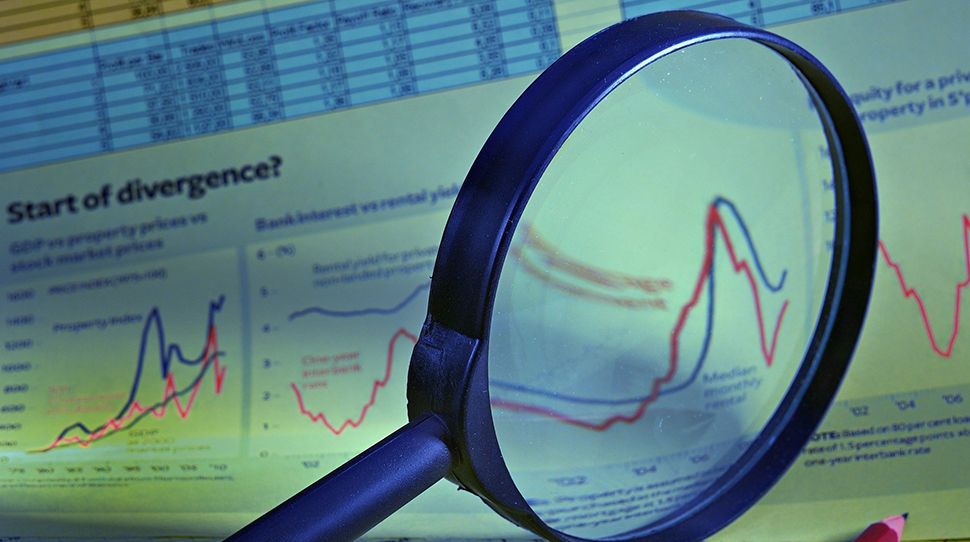Focus on equity markets and the earnings season in 10 questions

1- A widening correction and volatility back to high levels
We have been witnessing a relatively sharp acceleration in the market correction over the past few days. The adjustment follows an already bearish trend over the last two weeks, with the S&P 500 closing above 3’500 points on 12/13 October.
The scale of the correction remains moderate in the United States: the market returned close to levels hit at the end of September (around 3’250 points), but far from the lows of spring 2020. In Europe, the situation is different: by losing 10% in a few days, the Eurostoxx 50 has returned to the levels of the end of May.
On a sector basis, polarisation is becoming more pronounced: certain sectors are indeed in a W configuration, having returned to levels close to the low points of the spring, such as energy, banking or real estate. Inversely, other sectors remain at levels well above those of last spring. These sectors are not limited to the three privileged secular themes (environment / technology / health), but also concern industry and consumer goods.
The level of volatility has returned to high levels (40 on the VIX compared to 25 in mid-October) similar to those at the beginning of June, but still far from those of last March (around 80 at the height of the crisis).
2- A change in market drivers
The market correction linked to the acceleration of the pandemic and lockdowns has now overshadowed the factors that dominated the market until now: the elections and the fiscal stimulus package in the United States.
This is probably the major difficulty for investors in terms of decision-making: how should we interpret that second wave of COVID-19 (visible for over a month) and lockdown measures (progressively rising for now several weeks) has now suddenly become the determining factor? Markets seem to have been ignoring this since the beginning of the autumn.
Several factors can be put forward:
- Until mid/late October, the increase in the number of cases was not accompanied by a strong acceleration in hospital and intensive care admissions;
- The markets seemed "immune" to COVID-19 based on two assumptions: no expected return to global lockdowns, and unwavering support for economic policies;
- The tightening of the containment measures will lead to a contraction in Q4 growth in Europe; even if the data we have been observing for several weeks now show a weakening of the trajectory, the idea of an economic fall-back in Q4 is a new factor;
- What has especially changed over recent days is the impression that we have lost control of the trajectory of the pandemic. This is a game-changer since it can lead to anticipating what seemed, for now, excluded. That is, we no longer project targeted or partial, but more generalised lockdowns as social-distancing measures failed to produce tangible results.
3- A season of very good results
The paradox behind the market’s current return to a bearish configuration is that it is taking place precisely in the middle of a very good corporate earnings season for the third quarter.
Even if it is still early to give definitive figures, at this stage, the published results are on average 15% above the level that the analyst consensus expected them to be. On average 70-80% of companies are publishing above market expectations. Here again, the good news comes not only from sectors particularly favoured by this atypical context, but also from companies in the industrial and consumer sectors, and in certain cases have led to increases in targeted earnings for this year and next year.
4- A still uncertain outlook
However, what is remains difficult for both companies and investors is to plan ahead. Indeed, the percentage of companies that have communicated a 2020 earnings target has dropped significantly during the spring and has not meaningfully recovered this quarter.
As at the macroeconomic level, it is easier for companies to plan in terms of possible growth scenarios according to different epidemic outcomes rather than committing to a cemented business plan. The other important point that weighs on investor’s ability to project themselves, is of course, the prospects of the US elections, which generates a wait-and-see attitude (see below).
5- A pause in sectoral rotation
Between the end of September and mid-October there was a revival in the attractiveness of cyclical stocks to the detriment of defensive and quality stocks. This trend has now come to a halt. All stocks are now correcting, but with a important divergence between: i) defensive stocks, stocks supported by their results and/or secular drivers and ii) cyclical sectors that are again being penalised. For example, construction or automobile, are two sectors which seemed to be recovering well, but are again being dragged down in the short term.
6- Stay@home themes continue to perform
Within US stocks, online-sales stocks have posted very positive performances since the start of the year, as have all @home products. The stay@home theme has corrected over the last few days, but to a limited extent (-2% in about 5 days) and has posted a performance of around 20% since the start of the year (source: Goldman Sachs). Conversely, the travel, hotel and catering sectors corrected by more than 10% over 5 days.
7- China continues to dominate
While most global indices are in negative territory, only one market is an exception: Chinese domestic stocks, which continue to progress in this context.
There are several explanatory factors that we have already mentioned in our recent publications and presentations:
- The Chinese economy is the only major growing economy in 2020;
- As per recent information, the pandemic seems to have been under control in China for several months;
- Corporate results are growing this year and next, but valuation ratios are more attractive than those of US or European equities;
- Domestic Chinese equities will benefit from further inclusion in regional and global equity indices.
Furthermore, within Asia, the stay@home, health and renewable themes outperformed regional indices, and have posted performances of over 50% since the start of the year.
8- The US elections
With only a few days before Election Day and with more than 70 million Americans having already voted remotely, this forecasts:
- a record participation rate
- a polarization between mail-in voting (with a Democratic majority) and physical voting at poll stations (with a Republican majority)
- a high risk of a contested vote
Voting intentions are still largely in favour of Joe Biden, while President Donald Trump seems to be making a comeback in the polls, but which seems still insufficient to succeed in turning the tide.
It is quite possible, as it was 4 years ago, that President Trump could win pivotal states whose polls currently suggest Joe Biden the winner, such as Arizona and North Carolina. According to the latest estimates, Trump would win Florida. Pennsylvania's situation could be more uncertain, making it crucial for Biden to win Wisconsin and Michigan in which he is credited with an 8-9 point lead (source RealclearPolitics).
It is possible that the final results may take several days to release which can lead to volatility around the election. The least favourable scenario for markets would be a contested election ultimately arbitrated by the Supreme Court mid-December.
9- The prospect of additional fiscal and monetary stimulus
In the light of the market configuration of last spring (a very violent drop linked to the lockdown, then an upswing in markets initiated before deconfinement and enabled by the announcements of economic stimulus policies), it is important to keep in mind that this factor (fiscal and monetary policy mix) could be significant by the end of the year and again foster a rebound.
However, this presupposes that monetary authorities and governments have the will and the capacity to do so. Across the Atlantic, a bipartisan budget stimulus project is likely to emerge soon after the election. In Europe, governments are announcing additional measures, but it is also on the monetary policy side that more measures are expected (increase in the PEPP, or even lower rates).
10- Conclusion: what position to adopt today?
In this volatile and uncertain phase, rushed investment decisions rarely pay off. It is therefore preferable to understand all the factors analysed beforehand to position yourself (macroeconomic context, earnings trends, political and health context, volatility, sentiment indicators, valuations).
As our pens hit the paper, this leads us to think that it is probably a little late to sell (at least to sell Europe), and a little early to buy the market. The downward trend may continue for a few more days and opportunities can arise around the US election. The trend of COVID-19 and the policy actions taken will ultimately determine whether or not a second downward streak of around 10% will occur.
In this context, it is probably wise to keep a long-term stance for most of the allocation, and to exploit this phase of volatility to gradually rebuild positions, in particular in cyclical stocks or in European stocks exposed to Chinese growth.
This context also leads us to reiterate our constructive medium-term views on: China, quality values ??and secular themes (digital revolution, health, demography, environment).
October 30, 2020




